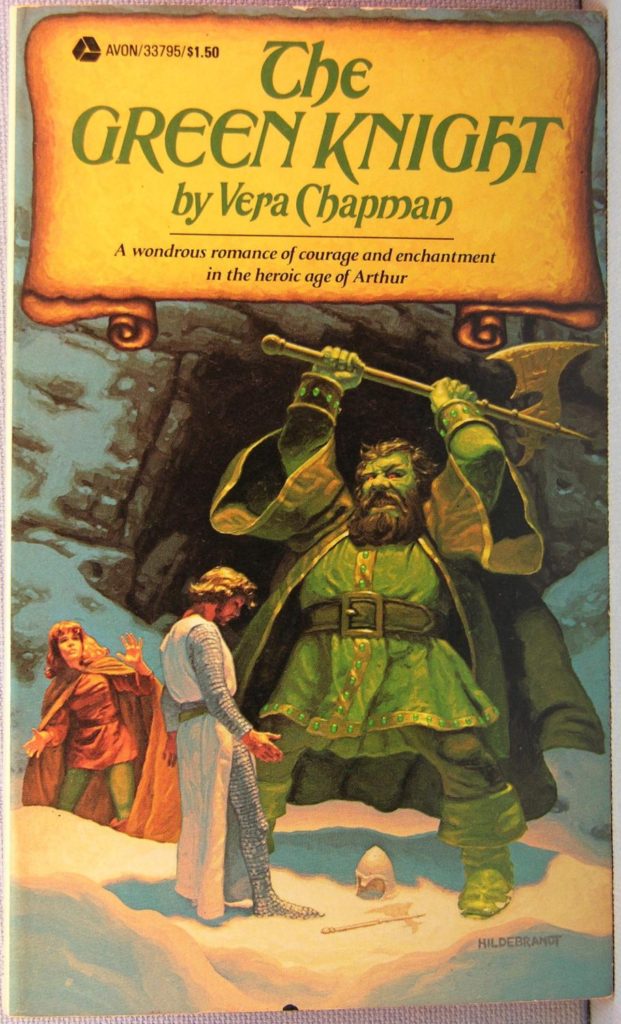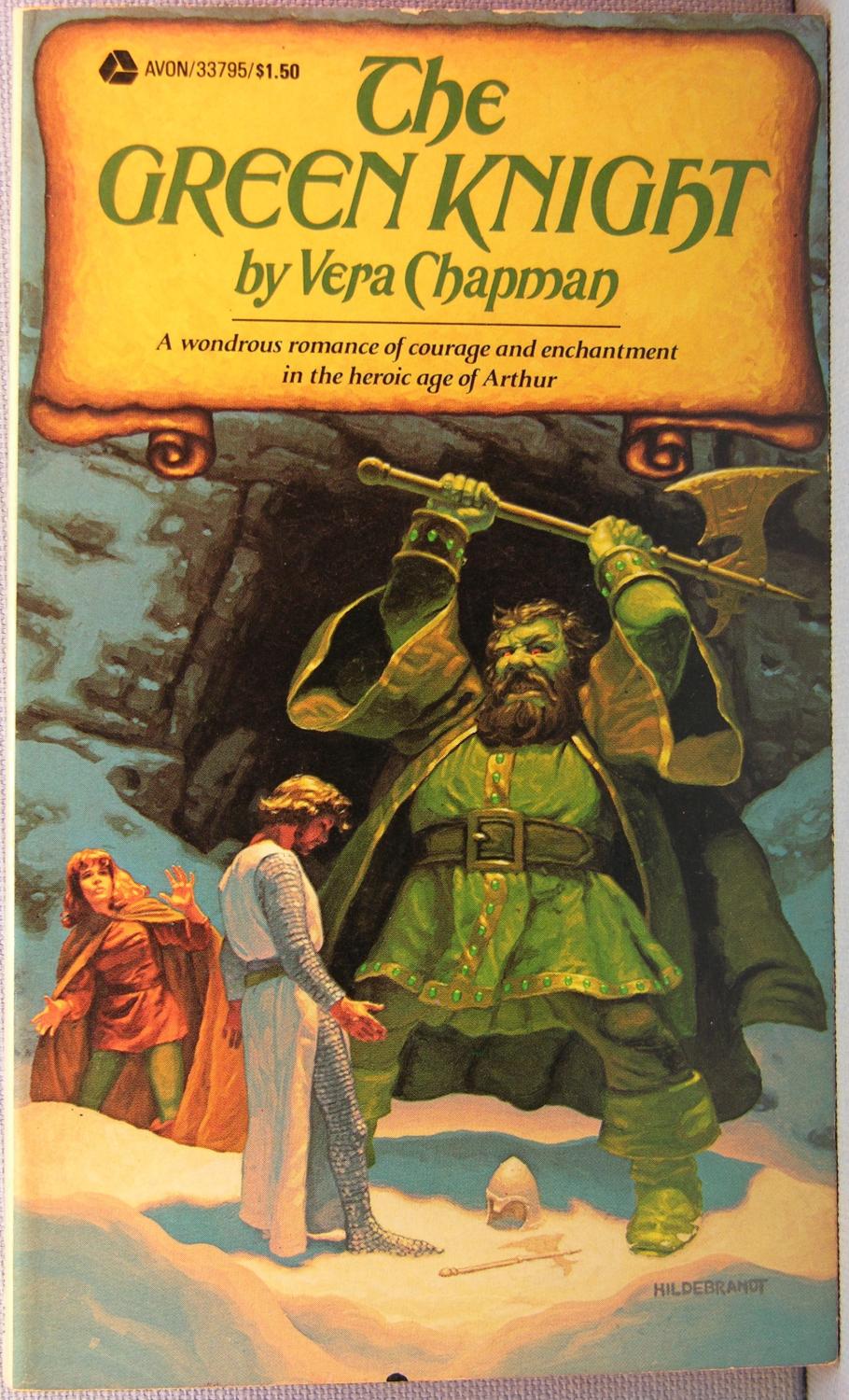Book Review: The Green Knight by Vera Chapman
Most long-time readers will be familiar with the basics of the legend of the Green Knight. King Arthur is holding court in Camelot at Christmastide when a stranger dressed in/colored green appears. This Green Knight proposes a contest of blows. A champion of Camelot will strike at the stranger with his battle axe, then the Green Knight will return the favor. The monstrous knight strikes fear into the hearts of those assembled, and it looks like Arthur himself will have to participate, until Sir Gawain steps up. The Green Knight does not resist the blow, and Gawain beheads him. The stranger puts his head back on, and says that Gawain must now meet him at the Green Chapel near the castle of Haut-desert in a year and a day to receive the return blow.

The oldest known version of this chivalric romance is a Middle English poem from the 14th Century. It’s been translated multiple times, and Vera Chapman in her introduction states that she’s been influenced by J.R.R. Tolkien’s research on the poem, though at the time she wrote this novel his full translation had not been published. (It came out the same year, 1975.)
As is the tradition of Arthurian storytellers going back to the medieval gleeman, Ms. Chapman puts her own spin on the tale. Specifically, she gives Lady Bertilak, Vivian, great-niece of Morgan le Fay and granddaughter of Merlin, an equal role as narrator, explaining her motivations. She and Gawain each have two narrative sections, and the tale is finished by Melior, the last disciple of Merlin.
Gawain is also reimagined as Gawain the Younger, nephew of Gawain of Orkney who is here established as the one who appears in most of the Arthurian tales. Thus this adventure is the first of his tasks of the Round Table.
Morgan le Fay picks up her niece Vivian from the convent where the young orphan has been brought up and brings her to Castle Haut-desert to teach her the ways of magic. Morgan is not of the Christian faith, nor a follower of the Old Ways, but draws her power from a darker source. (The devil may be involved, but her loyalty isn’t to him, either, but to herself.)
Morgan learns that Queen Guinevere is with child, and fears that this means King Arthur will have a legitimate male heir. She also hates the queen personally for having her banished from Camelot. So she puts a multi-pronged plan into play. Morgan forces Lord Bertilak into the form of the Green Knight and sends him to Camelot. The initial idea is to cause Guinevere to miscarry and/or require Arthur to play the game of blows and thus die.
When Gawain intervenes, this requires a modification to the plan. Morgan pushes Vivian into a marriage with Lord Bertilak. It’s unconsummated, but symbolically binding. Gawain arrives at the castle a few days before the return blow is to be delivered, and Vivian recognizes him as the true love she has seen in visions. Morgan pressures Vivian into trying to seduce Gawain, on the premise that this will protect him from the Green Knight’s power.
Three-fifths of the way into the novel, the promised encounter happens, and then the story enters new territory. For it seems that Morgan le Fay has one last way to win. Merlin enters the picture, but can even the ancient magician prevent a dark future?
This is good stuff, doing well with the fantastic elements of the Arthurian cycle and acknowledging both Christian and pagan influences. It’s heavier on the romance side than the original poem, and while not written specifically for the young adult market, should appeal to junior high readers on up. There’s a…unique take on the fate of Camelot and Britain that is worth discussing once you’ve read it.
I will say that this wouldn’t make a very good movie, as Melior’s section doesn’t connect until the very end and in a movie would seem to be coming out of nowhere.
Content note: The original poem has a long misogynistic rant, and this book’s Gawain likewise adopts a “women are poison” attitude for about a fifth of the story, after initially having a “all women are queens” (also pretty sexist) viewpoint.
Overall, an interesting take on Arthuriana, and well worth a look. It sold briskly back in the day, and the author wrote two sequels about other minor female Arthurian characters, so you might want to pick up the collected trilogy under the title The Three Damosels.
There’s a new movie coming out based on the legend, starring Dev Patel, so let’s look at the trailer!

